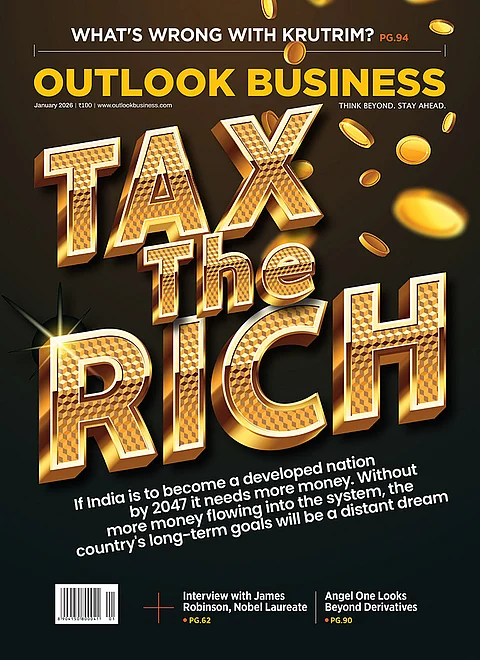The Indian stock market has always rewarded high-growth stocks, that is, all those exciting stocks that offer splendid growth in revenues and profits. The market was led by IT, FMCG and pharma stocks in the late 1990s, back when these sectors grew faster than others. The bull run of 2003-2007 was, on the other hand, dominated by a broad spectrum of stocks in infrastructure, capital goods, IT, banks and, again, pharma. Naturally, the sectors with the highest growth rates were rewarded with the highest CAGR returns.
Now, even if we take a longer time horizon of 10 years, stocks with higher growth were rewarded the most, and those with volatile earnings or low earnings growth were punished by the market. A classic example is Hindustan Unilever, which was a market favourite in the 1990s. Revenue and profit growth flattened in the decade that followed and HUL went on to earn the epithet of ‘one of the worst performing FMCG stocks’ not only in India but globally. It was only after growth returned that HUL’s stock rose from that nadir to new highs. The lesson remains the same: our markets reward growth stocks.
Seasoned investment professionals will advocate buying high-growth, good quality businesses run by efficient and professional managements with high standards of corporate governance at the right valuation. As Warren Buffett once said: “It’s far better to buy a wonderful company at a fair price than a fair company at a wonderful price.” Sadly, the markets rarely offer such opportunities in real life.
What’s the next best option? Go for a high-quality company with high-growth visibility even if the valuations are a bit steep. After all, we all pay more for quality. The best way to value these high growth stocks is to adjust their valuation for their growth. This is the reason why metrics like the Lynch ratio or Price Earnings to Growth (PEG = forward P/E divided by forward EPS CAGR) have emerged to value high-growth stocks. So, a stock with a high valuation can be considered if it’s supported by high earnings growth. Very important: market also gives a higher valuation for consistency and visibility of earnings.
There’s no doubt that the best way to have played the Indian economic growth of the 2003-2007 bull phase was through infra and capital goods stocks. But we can’t assume that they’ll be the right sectors for the next bull market as higher competitive pressures, regulatory issues and leveraged balance sheets will dampen performance.
So the best way to play the high growth of the Indian economy and its stock markets will be via the banking and financial services sector. The Indian banking sector grows by around three times the real GDP as a thumb rule, and there are banks that grow faster than the sector by gaining market share and higher fee income.
And thus HDFC Bank
There are no two ways about it: HDFC Bank is one of the best quality stocks within the banking sector. It has delivered PAT in excess of 30% for 52 consecutive quarters, and it did this even at the height of the Asian and global crises of 1998 and 2008, respectively. I doubt if any bank in the world has a similar track record.
Looking ahead, the Indian economy, supported by falling interest rates and more reforms, should bounce to 8% growth levels over the next two years. The banking sector can also grow at a rate higher than the broader market and, here’s the good news, HDFC Bank is likely to grow at 1.3 times the banking industry average.
As a bank, HDFC has all its bases carefully covered. Its loan book is well diversified (retail loans add up to 53%, corporate loans to 47%) and, now that many banks are staying away from the retail segment after the global financial crisis, HDFC Bank has adroitly exploited the space and grown profitably in it. Of course, Cibil’s Individual Credit Rating has also lowered the risk in retail lending. HDFC Bank’s retail portfolio has grown by 36% in Q2FY13, and it’s mainly car and personal loans, and loans for housing, commercial vehicles and small businesses, that account for it. It has also quietly become the leader in the Indian credit card market; the bank has issued over 5.6 million credit cards.
Because they are worth it
I agree that HDFC Bank is possibly the most expensive bank stock in the world on valuation metrics such as one year forward price/book value (P/BV) at 3.8 times but, I also feel that the valuation is justified, based not only on the bank’s operations and profitability but the consistency with which it delivers high-quality growth even in a volatile environment. Its return on equity is in excess of 20%; return on assets comes in at 1.7%; provision coverage over 80%; net interest margins are at 4.2%; low-cost CASA assets are at a very healthy 46% whereas gross non-performing assets are only 0.9%; the net NPAs are at 0.2% and restructured assets are at 0.4%.
If there is one grouse analysts can have against HDFC Bank, it is its high valuation but, historically too, it has always traded at a premium to the banking sector at large, thanks to its stellar metrics.
Volatility is a measure of risk and HDFC Bank’s volatility is lower than any other banking stock in India; it actually falls lower than the market when bears rule and outperforms a bull market, making it a dream stock. This also means that, on a risk adjusted basis, HDFC Bank gives vastly superior returns when it’s compared with other banking stocks. It’s a stock that never gives you blood pressure or panic attacks with sudden price swings.
HDFC Bank is also expanding into smaller towns. Its branch network has grown by 22% y-o-y and 67% of the new branches have been opened in small towns. Retail loans are expected to be an important growth driver in under-developed markets.
But it is non-interest income that adds to the bottomline of a bank without attendant interest expense, and this has been consistently high for HDFC Bank — close to 30% of its total income. The slowdown has shifted the focus to non-lending fee income (transaction fees for payments through electronic systems, debit cards used in ATMs and wealth management fees), which is insulated from ups and downs. In sum, HDFC Bank’s efficient management and track record make it a high growth stock you can buy and sleep peacefully.











